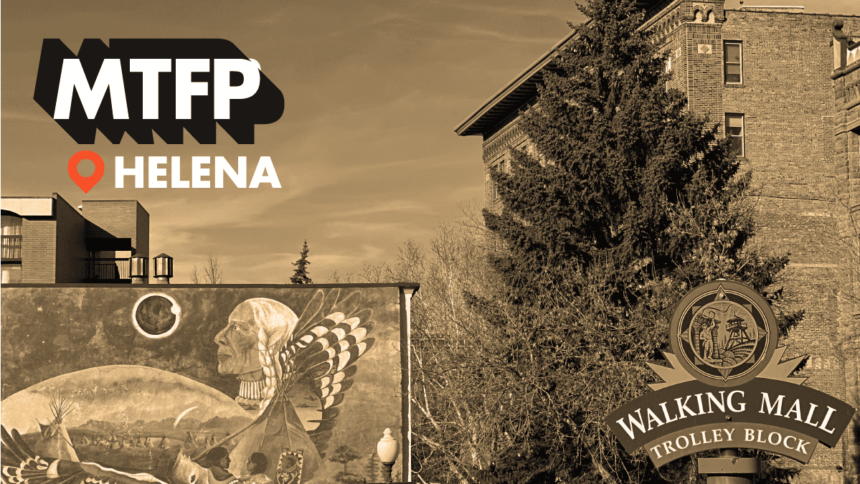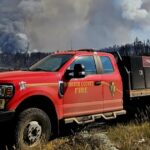07/15/2024
“Helena This Week” is reported and written By JoVonne Wagner. Send your Helena news and tips to jwagner@montanafreepress.org.
Helena’s urban camping policy will remain in place for now, according to city and law enforcement officials, after the U.S. Supreme Court ruled that local authorities can enforce bans on people sleeping in public spaces.
The ruling reverses a 2018 decision by the 9th Circuit U.S. Court of Appeals that prohibited authorities from enforcing ordinances targeting people who camp within city boundaries and have no other form of shelter.
Helena’s city code makes it unlawful for anyone to sleep overnight in public areas without the city’s permission.
Since the Supreme Court ruling last month, members of the public have raised questions about how Helena handles urban camping as the city continues to see its unhoused population grow.
Last month, local nonprofit United Way of Lewis and Clark Area released survey results showing that 181 unsheltered people live in the area, compared to the 164 counted in last year’s survey.
Helena City Manager Tim Burton told Montana Free Press that the city will continue to address homeless individuals who sleep in public spaces as they normally do while officials review city ordinances and discuss a solution with local partners. The city manager said he will present an update during the next city commission meeting on Monday, July 15.
“In talking with [the police] chief, we plan on a status-quo approach because our folks are doing a great job working with the unhoused people,” Burton said. “We’re going to continue to work with our strategic partners, the non-profit organizations that understand and have resources as well, and we’re going to be very deliberate and thoughtful in our approach.”
Burton said public camping regulations are not meant to criminalize homelessness but rather to give local officials the authority to handle urban encampments that pose health and safety risks.
Local law enforcement’s current protocol is to encourage urban campers to use alternative resources such as shelters, drug treatment programs, and mental health facilities. However, when homeless encampments pop up around the city they pose an accessibility issue for the public, Helena Police Chief Brett Petty told MTFP.
“What’s happening is you can’t go down to an area, build kind of a tent-slash-barrier, and not have that place usable by everyone else in the public,” Petty said. “We need it. We need the parks. We need sidewalks. We need all that stuff usable at all hours of the day for everyone. Our focus as a city is [to] make these areas, make the sidewalks, make the parks usable for everyone.”
5 Things to Know in Helena
Fees for planning: The city’s planning department last week recommended that the city commission approve increasing fees for land-use and subdivision applications. If approved, some fees would go up by about $400 with a three-year implementation plan. The current fees haven’t changed since 1997. The resolution will go before the commission on Monday, July 15, and if approved, a public hearing will be held on Monday, August 12.
One-ways around the Cap: The city’s transportation staff presented a preliminary proposal to the city commission last week to change Sixth Avenue and Lockey Avenue around the Capitol into one-ways and to adjust parking. The Sixth Avenue portion between Montana Avenue and the Capitol’s parking lot would have eastbound traffic while Lockey Avenue would have westbound traffic between the parking lot and Roberts Street. In addition, parallel parking spots along the Sixth Avenue section would change to angled parking. The proposal came from city and Capitol staff to increase parking accessibility and safety while encouraging traffic flow around the new Montana Heritage Center that plans to open next year. The proposed changes won’t be official until the commission gives its final approval at a later date.
Away with the bin: Recycling bins located on McHugh Drive will be removed starting Sunday, August 11. Last month, both city and county commissioners and staff discussed complaints and public comments about the McHugh location. Residents who live near the location said there were issues with noise, odor, and litter and urged officials to consider the removal of the bins. Helena, in partnership with Lewis and Clark County, manages seven other remote drop-off locations:
- County fairgrounds at 98 W. Custer Ave.
- Boeing at 32000 Skyway Dr.
- Canyon Ferry Mini-Basket at 3012 Canyon Ferry Road
- Across from Dale Harris Park at 279 S. Cruse Ave.
- Safeway at 611 N. Montana Ave.
- Grub Stake at 1450 Lincoln Road West
- By the Laib-Ation Station at 410 Lincoln Road West
Visit the city of Helena’s recycling website for more information.
Summer art week: The Summer Art Walk returns on Friday, July 19, from 4 p.m. to 8 p.m. and will be accompanied by Helena’s first “Art Festival Week,” which runs July 15 through July 21. The local non-profit Omertà Arts Syndicate will host the festival that will offer a range of events, including workshops, bike parades, and live music. The art walk is scattered throughout downtown on Last Chance Gulch from Placer Avenue through the walking mall. For more information about the art walk or the festival, visit Omertà’s website.
Triathlon time: Helena’s annual Montana Women’s Triathlon is on Sunday, July 21. The event will feature a 500-meter swim, a 10-mile bike ride, and a three-mile run. The day will also include a para-triathlon and team and youth races. Registration for those 19 and under is open until Wednesday, July 17, and until Thursday, July 18, for adults. Visit the Montana Women’s Triathlon website for more information and to sign up.
3 Questions For
The Helena area, along with most of Montana, is experiencing a heat wave that’s sending temperatures past 90 degrees. Lewis and Clark County health officer Drenda Niemann spoke with MTFP on the negative health impacts from extreme heat, preventative measures to stay cool and who is most at risk from the scorching temperatures. Her comments have been edited for length and clarity.
MTFP: What are some health impacts that people could experience from high temperatures?
Niemann: Dehydration is probably the biggest one to watch out for, and that’s just individuals who are not getting enough hydration and they’re exerting themselves in the heat. So making sure that they drink lots of water while the temperatures are hot, I think, is the biggest message to send.
But with dehydration can then come lots of other pretty serious health problems. So I think that my message is to prevent it in the first place, but yes, there are definitely issues that can happen with an individual’s health if they’re not careful in the heat.
MTFP: What are the symptoms of heat stroke and what should someone do if they are experiencing symptoms?
Niemann: Confusion, loss of consciousness, hot, dry skin or profuse sweating. Also, people will stop sweating when they go into heat stroke and that’s just because they’ve used the hydration that they have in their body. It’s essentially been used up. If you’ve been out in the heat long enough and you stop sweating, that’s a serious indicator that there is something wrong. Seizures and very high body temperature are the prime symptoms of heat stroke. If the individual doesn’t get those treated, they could be fatal.
I would say pay attention to symptoms of heat exhaustion first because that’s going to come before a heat stroke. You’re looking for things like headache and nausea, dizziness and weakness, irritability, thirst, and heavy sweating. So get inside, get in the shade and get some water and a cool damp cloth to try to get the body temperature down. But once you’ve moved into heat stroke and it becomes more serious, that’s the point at which you really should get to the hospital and get some medical attention.
MTFP: Is there a certain population that is at higher risk of experiencing health problems from extreme heat?
Niemann: Children are more susceptible to negative health impacts and so are older adults and people with disabilities. I would also say individuals who work outside are gonna also be at high risk for issues working in the heat.
The other thing to think about is not leaving pets and children in cars. When it’s 80 degrees outside, within an hour, the inside of a car can be 120 to 123 degrees. So, please don’t leave pets and children in cars when it’s hot outside like this. That can be extremely dangerous.
I think that we have some issues in our community because we’re not used to high temperatures like this. We have very few resources for individuals who are not housed so where they can go can be a real challenge. I would challenge our community to open their doors if we have businesses that have air conditioning. Individuals who are on the street may need a brief reprieve from the heat because we don’t have places for people to go. We have very limited shelter opportunities.
Might Be Fun
The Montana Clay Tour will host its eighth annual ceramics event on Saturday, July 20, and Sunday, July 21. Five Helena-based artists will open their studio doors to the public and showcase over 40 Montana guest artists and their work. The studio tours will run from 10 a.m. to 4 p.m. each day. For more information on the studio locations and artist backgrounds, visit the Montana Clay Tour’s website.





